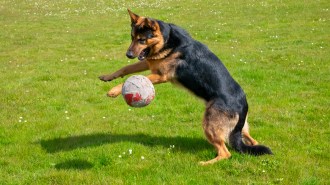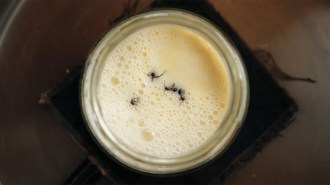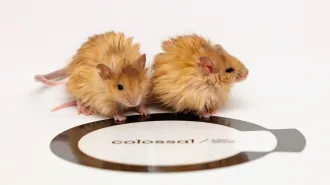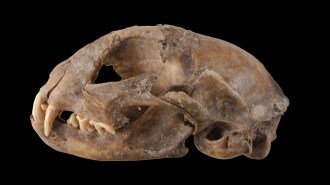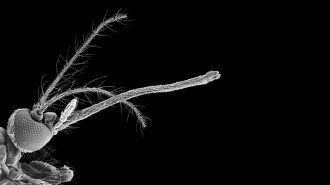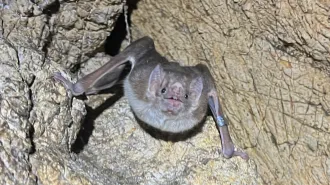Octopus arms are adaptable but some are favored for particular jobs
The cephalopods don't use every limb in the same manner, something they share with primates
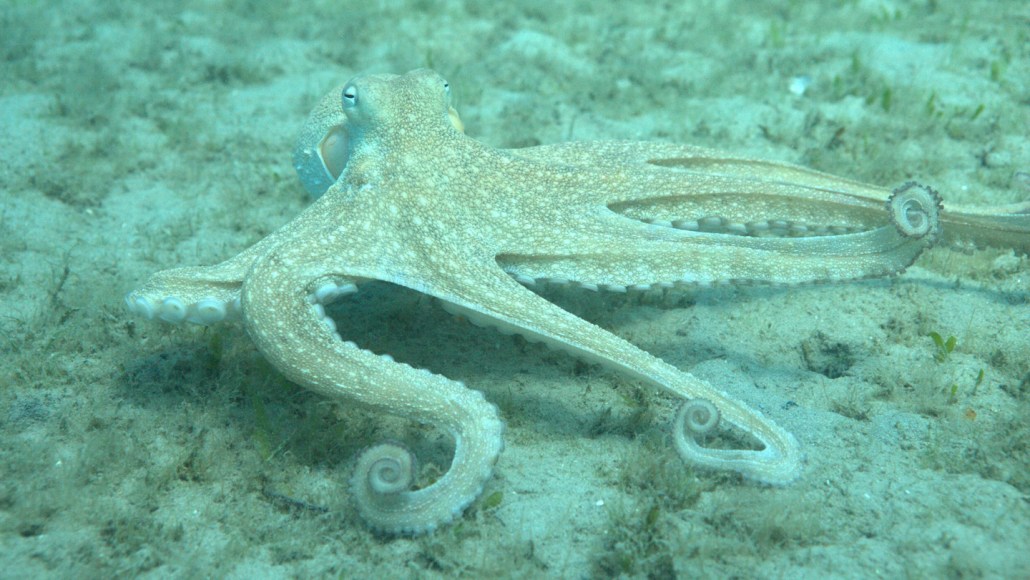
Octopuses tend to use their rear arms more frequently than their front arms for moving their bodies, such as pushing or rolling along the seafloor, as seen in this Octopus americanus.
Roger Hanlon
All eight arms of an octopus can be used for whatever their cephalopod owner wishes, but some arms are favored for certain tasks.
A new, detailed analysis of how octopuses wield their famously flexible appendages suggests that all eight arms share a skill set, but the front four spend more time on exploration and the back four on movement. The findings, published September 11 in Scientific Reports, provide a comprehensive accounting of how subtle arm movements coordinate the clever invertebrates’ repertoire of behaviors.
Octopuses live their lives through their sucker-lined arms, which make up the bulk of their body mass and contain most of their nervous system. Marine biologist Chelsea Bennice wanted to understand how octopuses use the extreme flexibility of their boneless limbs to move, hunt and investigate their environment. Her colleagues had examined some of these behaviors in laboratory settings, but not in the wild.
Bennice and her colleagues watched 25 videos, filmed from 2007 to 2015, of multiple species of wild octopuses in Spain and the Caribbean, cataloging their behaviors and arm movements. In all, the researchers logged nearly 4,000 arm actions, which could be broken down into 12 types, including raising, reaching and grasping. The arms could deform in four distinct ways: elongating, shortening, bending and twisting.
The team found that the octopuses were exceptionally ambidextrous.
“Octopuses are ultimate multitaskers,” says Bennice, of Florida Atlantic University in Boca Raton. “All arms are capable of all arm behaviors and all arm deformations. They can even use multiple arm actions on a single arm and on several arms at the same time.”
Despite this versatility, the animals seem to divide up how they use their front and back arms. The front four arms are used more often in general, about 64 percent of the time that any of the arms are in use. But the rear arms take the lead for locomotion tasks, such as elevating the body or rolling the arms along the seafloor in a conveyor belt–like manner.
This slight specialization in task preferences for certain limbs has been seen in other animals, including primates and rodents.
Cassady Olson, a neuroscientist at the University of Chicago, was surprised that the study didn’t reveal a left-right bias in arm usage. Instead, the octopuses tended to use their arms in coordinated left-right pairs.
“Previous research has suggested that octopuses have left-right arm preferences for reaches, akin to left hand versus right hand dominance in humans,” she says. “Those studies were done in a lab setting, suggesting a difference in behavior depending on the lab or a natural environment.”
Bennice and her colleagues suggest that their findings could benefit the development of soft robotics, which have drawn inspiration from octopus arms. In particular, the team’s breakdown of how small arm tweaks create whole arm actions might have engineering applications.
In the future, Bennice would like to see similar work on octopus species with radically different body shapes, such as the extremely slender-armed mimic octopus (Thaumoctopus mimicus).
“Other octopus species have different proportions of arm size and length,” she says, “It would be informative to compare their arm behaviors as it relates to the whole animal behavior.”
